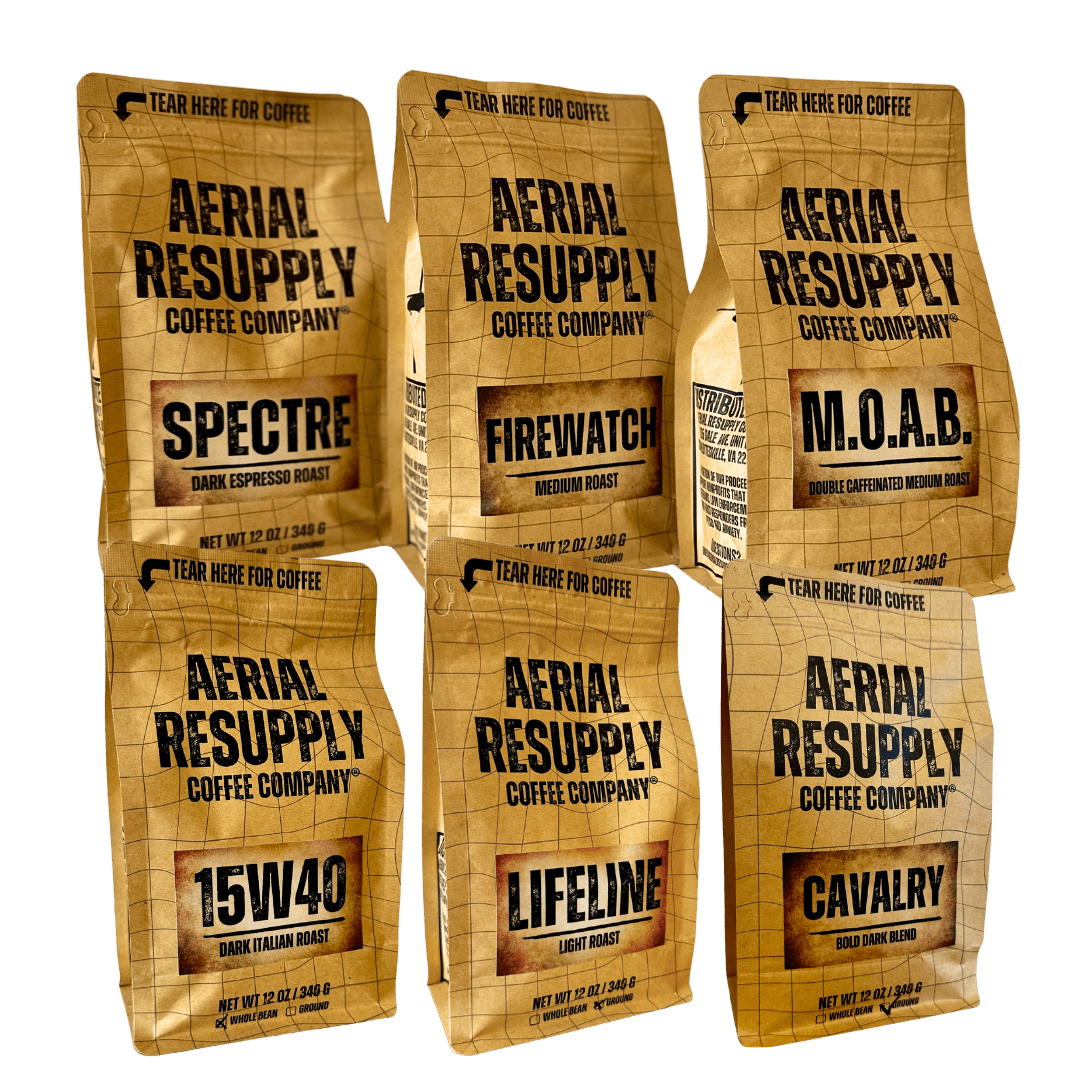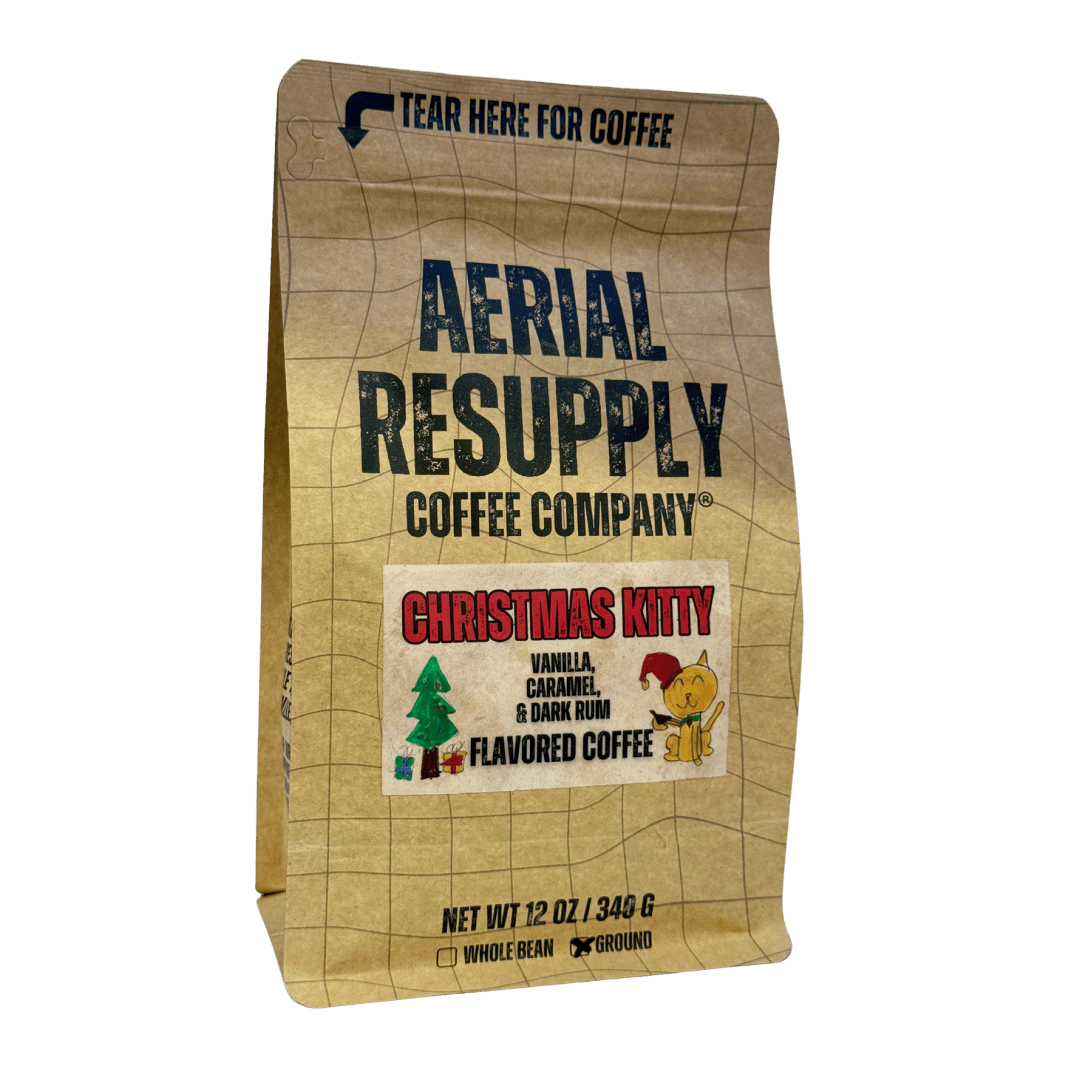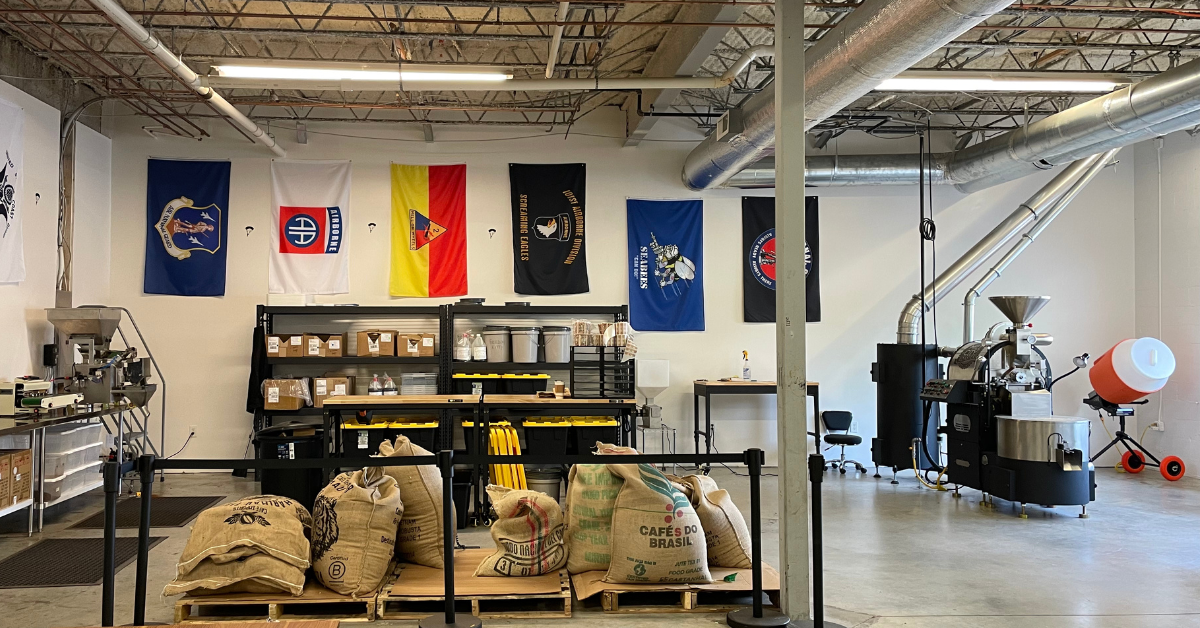How to Use Coffee Grounds in the Garden: Tactical Grow Guide
Your morning brew isn’t the end of the mission—it’s the start. Those used coffee grounds you’re about to toss? They’re tactical assets for your garden: slow-release nitrogen, structure for tired soils, moisture management, and even a natural deterrent for a few common pests. With a little discipline—and the right beans from Aerial Resupply Coffee—you can convert everyday waste into high-value soil ammo and keep your lawn, beds, and planters mission ready.
Why Coffee Grounds Belong in Your Garden Loadout
Used coffee grounds are rich in organic matter and offer a steady trickle of nitrogen as they break down. Mixed into compost or soil, they support microbial activity, improve aggregation (crumb structure), and help sandy soils hold water while loosening up heavy clay. The result is soil that drains, breathes, and feeds roots—without resorting to synthetic boosters.
- Slow-release nitrogen: Feeds foliage without flash-burning tender roots.
- Microbe morale boost: Grounds feed beneficial bacteria and fungi that unlock nutrients for plants.
- Better soil physics: Improved aeration and water management for both clay and sandy soils.
- Low-waste, low-cost: Repurpose what you already brew. If you need more grounds, well… brew more ARC premium roasts.
Coffee Grounds 101: Know Your Material
“Coffee grounds” means the spent, brewed particles left after hot coffee or cold brew extraction. They’re typically near neutral to mildly acidic once brewed, and they contain trace potassium and phosphorus alongside their headline nitrogen. While you can apply them fresh, drying your grounds first avoids mold issues and clumping.
How to Dry Used Grounds (Quick SOP)
- Spread grounds ¼-inch thick on a baking sheet.
- Air-dry for 24–48 hours in a ventilated spot, or set an oven to its lowest setting and dry for 20–30 minutes (door slightly cracked).
- Store dry grounds in an airtight container until deployment day.
Five Tactical Ways to Use Coffee Grounds (With Ratios and Real Results)
1) Compost Accelerator (Green Material)
In compost math, coffee grounds count as “green” (nitrogen). Aim for a rough 1:3 ratio of greens to browns by volume. Browns include dry leaves, shredded cardboard, straw, or paper. Mix thoroughly to keep the pile aerated and odor-free.
Result: A warmer, faster, more balanced pile that finishes into a nutrient-rich, dark crumbly compost—perfect for topdressing beds in spring.
2) Soil Amendment for Beds and Pots
Blending grounds directly into soil is simple, but moderation wins. Mix up to 10–15% by volume into potting mixes or garden beds alongside compost. This improves structure and moisture holding without creating a hydrophobic mat.
Pro move: Combine grounds with sifted compost and sand for a breathable raised-bed blend that resists compaction.
3) Mulch—But Mix It
Pure grounds on top can crust and repel water. Instead, build a mulch cocktail: 1 part dried grounds + 4 parts shredded leaves/wood chips. Layer 1–2 inches deep, keeping mulch pulled a couple inches away from stems to prevent rot.
Benefit: Moisture retention, cooler root zones, fewer weeds, and a trickle of nutrients as the mulch breaks down.
4) Seedling Support (Go Light)
For seedlings and young transplants, leverage a spring tonic: 1 part grounds, 4 parts screened compost, 1 part perlite. Use as a topdress ring around the plug, not in the plug. Water in gently.
Why: This micro-dose supports early microbial life and steady nutrition without overwhelming tender roots.
5) Cold Brew “After-Action” Grounds
Cold brew grounds (steeped long and cold) often feel gentler on soils and can be easier to integrate. Use them like hot-brew grounds—dry first, then deploy in compost, mixes, or mulch blends.
Pest Pressure: Where Grounds Help—and Where They Don’t
Fans swear by coffee grounds against slugs and ants. In practice, consider grounds a speed bump, not a fortress. The abrasive particles and residual compounds may discourage soft-bodied pests, but they’re rarely a silver bullet. Use grounds strategically with other tactics:
- Slugs & Snails: Sprinkle a thin, broken ring of dry grounds around vulnerable seedlings and combine with copper tape or beer traps.
- Ants: Dusting ant trails may disrupt activity short-term. For nests, lean on boiling water (outdoors only), soapy water drenches, or targeted baits where appropriate.
- Fungus gnats (indoor pots): Dry top inch of soil between waterings; add a ¼-inch cap of sand; sticky traps for adults. Grounds can be a small part of an indoor mix if you avoid overwatering.
Bottom line: Treat grounds as part of an integrated defense plan, not your only line of security.
Plants That Appreciate Coffee Grounds (and Those That Don’t)
Most plants handle modest, well-mixed applications just fine—especially when grounds are blended with compost. Some plants particularly appreciate the mild acidity and structure improvement:
- Acid-inclined shrubs: Blueberries, azalea, rhododendron, camellia.
- Leafy greens & herbs: Lettuce, spinach, kale, parsley—when grounds are composted first.
- Ornamentals: Hydrangeas (color influenced by soil pH), ferns, hostas (light use; don’t smother).
Use caution with: Seeds needing ultra-fluffy media (lavender, rosemary), heavy-feeding fruiting crops (tomatoes, peppers) if grounds replace balanced fertility—keep grounds under 10–15% of the mix and feed with compost/organic fertilizer as needed.
Frequently Missed Details (Field Notes from Hard-Won Experience)
1) Don’t Create a Sealed “Coffee Cap”
A thick layer of pure grounds can repel water. Either mix into soil/compost or dilute grounds with other mulches (leaves, chips, straw).
2) Watch the Watering
Grounds improve water management, but overwatering plus organic amendments equals fungus gnat party indoors. Let the top inch dry between drinks.
3) Balance Your Nitrogen Story
Grounds are helpful, not magical. They add organic matter and some N, but your garden still needs balanced fertility. Rotate in compost, aged manures, or organic blends for P, K, and micros.
4) Pets and Grounds
Keep fresh grounds and large quantities of brewed grounds away from pets. Caffeine isn’t friendly to cats and dogs. Store safely and mix grounds thoroughly into soil or compost.
ARC Beans = Better Grounds (Here’s Why)
The quality of your grounds starts with the quality of your beans. Smooth, clean-roasted coffee yields grounds that integrate well and don’t leave your garden smelling like an ashtray. That’s why growers in our community lean on ARC’s premium roasts—small-batch, veteran-roasted, and consistent across bags.
- Lifeline Light Roast: Bright and clean. Grounds blend beautifully into seed-starting compost mixes (sparingly).
- Firewatch Medium Roast: Balanced and versatile for daily drip; grounds make excellent mulch additives when dried.
- MOAB Double Caffeinated: Heavier morning fuel = more grounds for your compost pile—win/win.
- Spectre Espresso Roast: Darker grounds integrate well into clay soils—mix with compost to prevent crusting.
- 15W40 Dark Italian Roast: Bold, oil-rich profile; dried grounds are superb in mulch cocktails.
Want a steady “supply chain” of grounds for the garden? Join the ARC community and set up recurring deliveries of your favorite roasts—fuel your mornings, then fuel your soil.
Seasonal Field Guide: Deploy Grounds Year-Round
Spring (Build and Balance)
- Topdress beds with a compost + grounds blend (about 10% grounds by volume).
- Mulch perennials with the 1:4 grounds-to-leaf mix to suppress early weeds and stabilize moisture.
- Start seeds with a light ring topdress around transplants (not in the plug).
Summer (Hydrate and Protect)
- Refresh mulch cocktail after heat waves; keep mulch 1–2 inches deep and off stems.
- Compost piles dry out fast—add grounds as green input and water to maintain sponge-like moisture.
- For containers, remix the top inch with a spoonful of grounds + compost every 3–4 weeks.
Fall (Rebuild and Fortify)
- Leaf season = brown gold. Shred leaves and combine with grounds for an elite winter mulch.
- Load compost with grounds before winter; cover to retain heat and protect microbes.
- Plant garlic with a dusting of grounds in the row mixed with compost—not touching cloves.
Winter (Stockpile and Plan)
- Keep drying and saving grounds in airtight containers.
- Layer grounds into indoor worm bins or small compost reactors to stay mission ready for spring.
Simple Projects for Immediate Wins
Project A: Weed-Suppressing Mulch Ring
- Blend 1 part dried grounds with 4 parts shredded leaves.
- Apply in a 24–30" ring around shrubs and roses, 1–2" deep (keep 2–3" gap from stems).
- Water lightly to settle. Replenish mid-season.
Project B: Compost “Turbo Layer”
- Layer 2" shredded cardboard (brown), ½" coffee grounds (green), 2" leaves (brown).
- Repeat twice, then mix. Moisture should be like a wrung-out sponge.
- Turn weekly. Expect steam in cool weather—good sign.
Project C: Container Soil Refresh
- Scrape off ½" of spent potting mix.
- Add ¼" screened compost + a spoonful of dried grounds.
- Work in gently, water, and resume normal feeding schedule.
Common Mistakes (and How to Square Them Away)
- Dumping thick layers of pure grounds: Leads to hydrophobic crusts. Mix with compost or mulch.
- Over-relying on grounds for nutrition: Grounds aren’t a full fertilizer. Rotate compost/organic feeds.
- Ignoring drainage: Indoor mixes with too much organic matter + overwatering = gnats. Add perlite and let soil breathe.
- Skipping the dry step: Wet clumps mold fast. Dry grounds first for smooth deployment.
Make It a Ritual: Brew, Dry, Deploy, Repeat
Great gardens are built on routines, not gadgets. Brew your morning fuel with Firewatch or MOAB. Dry the grounds. Feed your compost. Topdress your beds. Refresh your containers. Repeat weekly. Over time, you’ll see soils soften, watering stretch farther, and plants hold posture through heat spells.
That’s logistics for the backyard: quiet, deliberate, effective. Exactly how we like it.
Ready to put your coffee grounds to work? Stock up on veteran-roasted beans and keep your garden’s supply line flowing with ARC Premium Roasted Coffee. Learn about our mission and community at About Aerial Resupply Coffee. Your morning cup fuels more than you know—your day, your soil, your purpose.
Shop the lineup: Lifeline • Firewatch • MOAB • Spectre • 15W40






